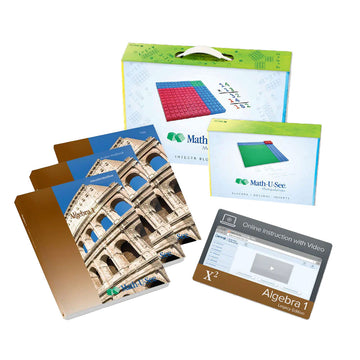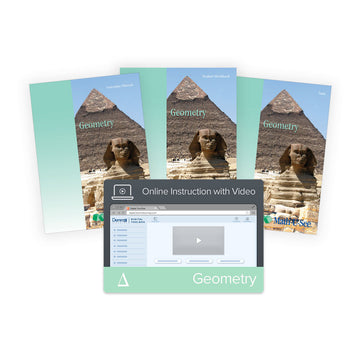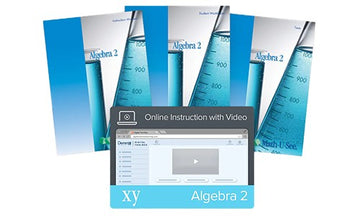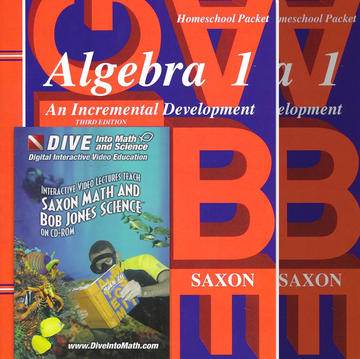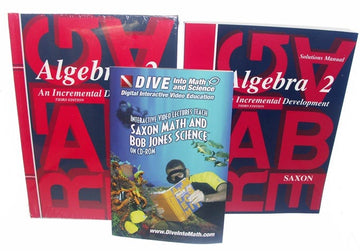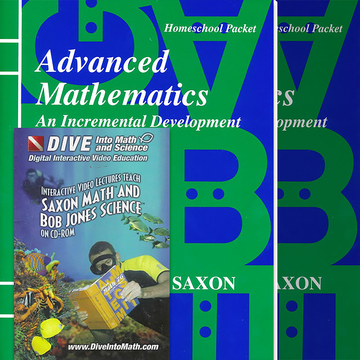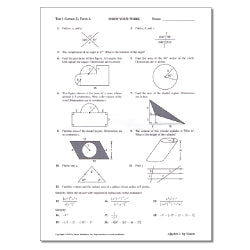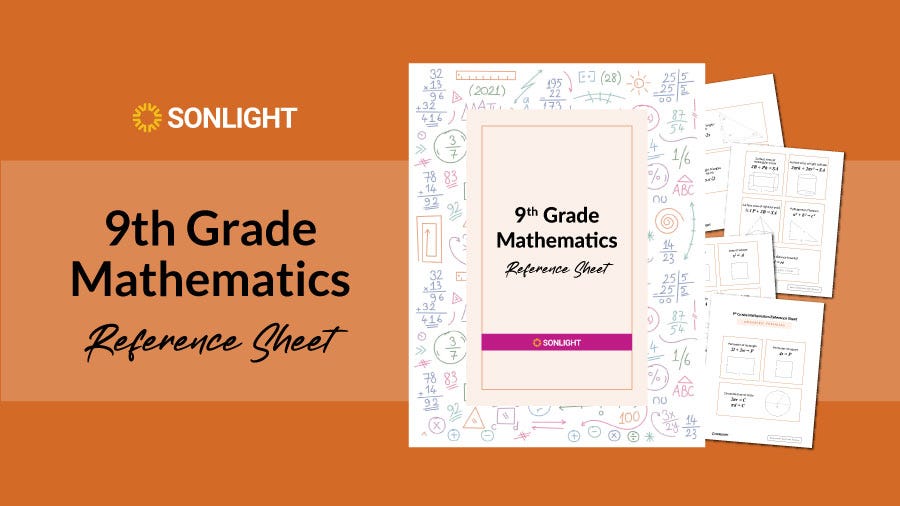9th Grade Math
In ninth grade, math gains complexity. Not only are the topics more challenging but the stakes are also higher since now grades and credits are reflected on a high school transcript. Plus there are college entrance exams to consider and minimum math requirements for college admissions.
It’s important to chart a solid plan for your next four years of math and then stick to the plan. At the first sign of math distress, get your teen assistance by adding supplements or hiring a tutor. See below for the best ninth grade math curriculum and supplements to get your teen to the math finish line of high school graduation and beyond!
If you’re in need of professional advice, reach out to a Sonlight Advisor. Their help is totally free.
9th Grade Math Curriculum
Ninth graders can choose from Saxon Math or Math-U-See. If you’re new to these suggested programs, use the placement tests here to find the right level for your student. Although each program has a year-by-year progression for K-12, if you’re jumping in before the earliest years, you may need to chart your own path through the courses. Don’t assume your ninth grader is ready for the course that Saxon or Math-U-See assigns to that year. Instead see what the placement test shows about a suitable starting point.
$131.70
$338.45
$344.75
$334.15
Dig deeper by referencing the Homeschool Math Comparison Chart on this main math page. And, to further compare these programs, see the detailed scope and sequence of each. But if you still feel unsure, an Advisor can help you identify which program is a good fit for you.
If you’re not sure which is the right level for your child, use the math placement tests here to confirm the best level.
1 Math-U-See
For students who use Math-U-See for their entire math career, they will end up studying geometry for their ninth grade year. But depending on your teen’s past math experiences, another level may be a better fit for ninth grade math.
Math-U-See Geometry Universal Set for 9th grade includes thirty lessons which cover basic geometric figures, parallel and perpendicular lines, triangles, geometric proofs, and basic trigonometry. Each lesson includes a short teaching video, practice pages, and a test. The complete set includes an instruction manual too.
2 Saxon Math
The Saxon Math Algebra 2 Program integrates geometry into the course so that you can realistically award your teenager 1 credit of algebra 2 and ½ credit of geometry from this curriculum.
Topics covered include graphing and solving two or more equations simultaneously, logarithms, conic sections, exponential equations, basic trigonometry, and vectors. The program includes opportunities to solve real world mathematical problems. There is also a DVD with instruction for each lesson included.
9th Grade Math Samples
Ninth Grade Math Lessons
Gretchen Roe from Demme Learning (publishers of Math-U-See series) has tips for teaching math lessons at the ninth grade (and high school) level:
Ninth Grade Math Formulas/Charts
Download, save, and print the 9th Grade Mathematics Reference Sheet to keep these key formulas handy.
Ninth Grade Math
Problems & Equations
Ninth graders learn to work with conic sections, solve equations containing radicals, learn geometric theorems and postulates, write geometric proofs, and apply basic trigonometry.
Ninth Grade Math
Numbers & Operations
For ninth grade math, a teen works with both real and imaginary numbers, square and cube roots, rational and irrational numbers, and exponential numbers.
Ninth Grade Math
Algebra
Both Math-U-See and Saxon for ninth grade will continue to review the basic algebraic concepts that your student covered in earlier levels. For example, polynomial equations, introduced earlier, will be used throughout ninth grade.
Ninth Grade Math Standards
Please check with your state to identify the standards for ninth grade math. You can also reference the Common Core standards. At the high school level, the standards are outlined by topic instead of by grade since students progress through higher math at different speeds and even orders.
Rest assured that both Math-U-See and Saxon Math well prepare students for the SAT and ACT and for college math classes.
Ninth Grade Math State Tests
If your state requires testing in ninth grade, you can expect the test to cover basic algebraic concepts including real life word problems; systems of equations and inequalities; radical and exponential expressions and equations; addition, subtraction, multiplication, and division of polynomials; factoring, functions, and relations; quadratic equations; and basic geometry.
Students who have successfully completed algebra 1 should have no issues with meeting these standards. If your student hasn’t yet finished algebra 1, the test may show deficiencies that you can easily shore up with future years of math study and/or supplements.
Ninth Grade Math Vocabulary
In addition to the mathematical and algebraic vocabulary your student has already mastered, ninth grade adds new terms, including:
- Sine, Cosecant
- Cosine, Secant
- Tangent, Cotangent
- Transversal
- Interior and Exterior Angles
- Inscribed and Circumscribed Figures
- Axioms, Postulates, Theorems
- Corresponding Parts of Geometric Figures
- Complex Number

Ninth Grade Math Supplements
If your ninth grader needs a bit of remediation or a math boost, try these unique supplements. The Life of Fred series is unlike anything your teen has ever seen! Through these books, your high school freshman follows Fred’s daily routine, all along being challenged to solve word problems and equations. In addition to reviewing mathematical concepts, this series includes important life skills. Each book covers one main topic. Even those students who think math is boring will enjoy learning with Fred.
